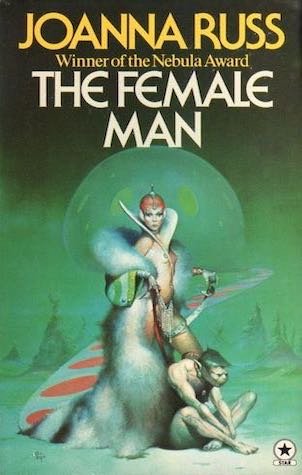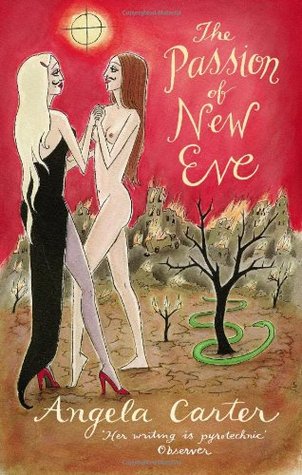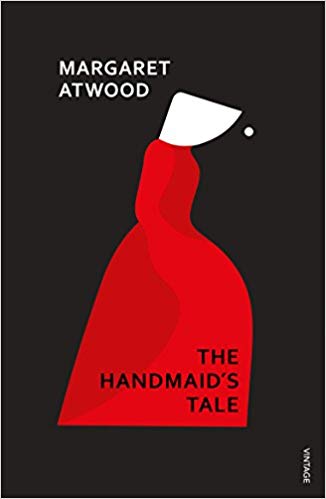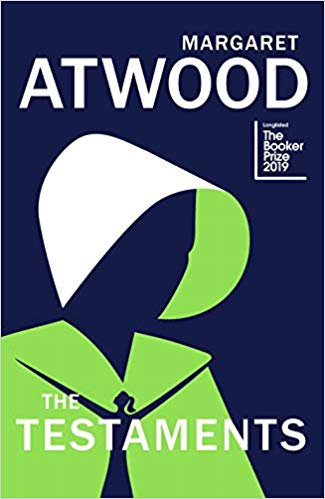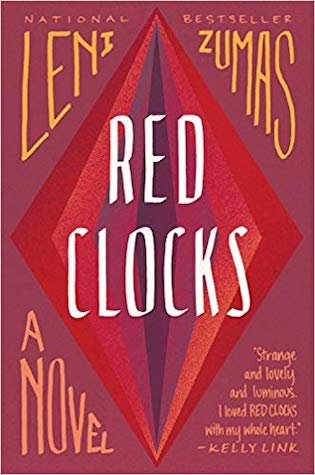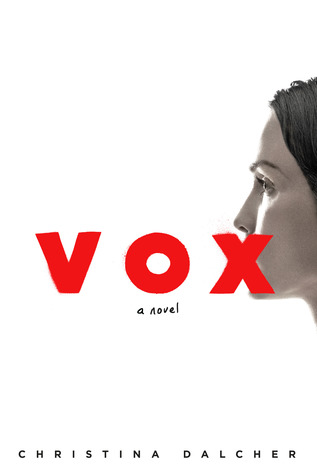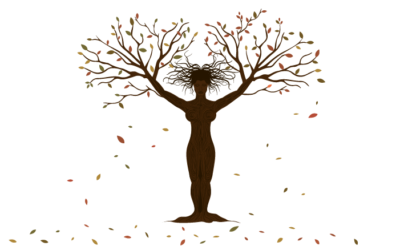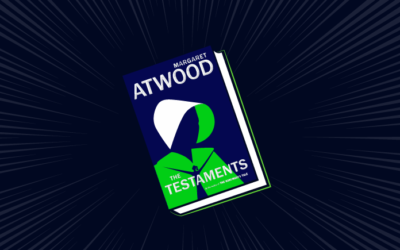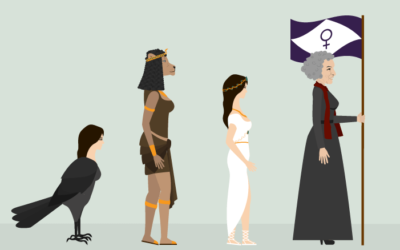Feature
Margaret Atwood And The Rise Of The Feminist Dystopia
Margaret Atwood did not launch the feminist dystopia genre. But by writing its most visible work, she helped bring the genre into the popular consciousness. From the post-World War II dystopian boom to the American feminist movement, Atwood drew on a variety of influences in writing her landmark novel The Handmaid’s Tale. More than 30 years after its publication, this feminist dystopia continues to inspire readers and authors with its relevant message and well-crafted story.
A Brief History
World War II saw the rise of atomic warfare and the development of western totalitarian states, events which inspired a host of new fears and literary responses. Dystopian classics like George Orwell’s 1984 (published in 1949) and Ray Bradbury’s Fahrenheit 451 (1953) reflected public consciousness about the growing power of governments and their ability to wage war.
The post-war years also launched the so-called “second wave” of feminism. Beginning with New Zealand in 1893, countries around the world had recognised women’s right to vote in the years preceding the war. But with many women having joined the workforce and defense industries during World War II, women began to demand greater access to jobs and equal pay. In the United States, this women’s rights push also drew inspiration from the civil rights movement of the 1950s and 60s.
In 1963, the U.S. Congress passed the Equal Pay Act to prohibit gender-based wage discrimination. Congress passed the Equal Rights Amendment to ban discrimination on the basis of sex in 1972, but the amendment was never ratified by enough states to become law. The following year, the U.S. Supreme Court decision in Roe v. Wade overturned a law banning abortion.
The Feminist Dystopia
It was amidst this atmosphere of social change that American author Ursula K. Le Guin published the 1969 science fiction novel The Left Hand Of Darkness. This tale of a society devoid of sexual prejudices won the Hugo and Nebula Awards for Best Novel in 1970 and ranked second in a 1987 Locus magazine poll of the best science fiction novels ever written. The following decade, Joanna Russ and Angela Carter drew on both the dystopian swell of previous decades and the successes of the women’s rights movement by publishing two of the first true feminist dystopia novels with The Female Man (1975) and The Passion Of New Eve (1977).
In The Female Man, Russ follows four women living in parallel worlds: one that mirrors Russ’s real-world present, one in which America is poorer and the woman must marry a man to survive, one depicting an all-female planet, and one where men and women are engaged in an ongoing war. When the four women meet, their disparate views on gender roles undermine their preexisting beliefs about their roles as women in their various societies. The Female Man was nominated for the 1975 Nebula Award for Best Novel, and Russ became a hugely influential author. Science fiction luminary Samuel R. Delany called her “one of the most important writers who has written in the United States in the last 50 years.”
In The Passion Of New Eve, Carter imagines a dystopian United States where civil war has erupted between different political, racial and gendered groups. The book’s message is not subtle—a cult of powerful women surgically transform an abusive man into a woman, allowing him to experience the injustices heaped upon females. Though it didn’t garner the same acclaim as Russ’s work, The Passion of New Eve is regularly listed as one of the best books in the dystopian genre. Contemporary dystopian author Jeff VanderMeer described it as a “crude, ugly book, by measures erudite and pompous, angry and profane,” while acknowledging it as a “neglected Carter masterpiece.”
Margaret Atwood And The Handmaid’s Tale
However, the feminist movement—at least in America—suffered a lull in the 1980s. The movement had achieved much of its platform in the 60s and 70s and found less popular support under the conservative presidency of Ronald Reagan. In 1985, Margaret Atwood published her breakthrough novel The Handmaid’s Tale. A native Canadian, Atwood earned her master’s degree at Radcliffe College (then the women’s school at Harvard University) in 1962 during the early stages of American second-wave feminism. In The Handmaid’s Tale, she imagined a totalitarian Christian theocracy which has overthrown the United States government and subjugates the few remaining fertile women to enforced attempts at procreation.
Yet unlike Russ and Carter, Atwood did not intend The Handmaid’s Tale as a feminist dystopia. “In a feminist dystopia pure and simple, all of the men would have greater rights than all of the women,” she wrote in a 2012 article. She continued:
“It would be two-layered in structure: top layer men, bottom layer women. But Gilead is the usual kind of dictatorship: shaped like a pyramid, with the powerful of both sexes at the apex, the men generally outranking the women at the same level; then descending levels of power and status with men and women in each, all the way down to the bottom, where the unmarried men must serve in the ranks before being awarded an Econowife.”
Instead, Atwood intended her novel as a throwback to classic dystopias like 1984 and Fahrenheit 451. Indeed, part of the appeal of The Handmaid’s Tale stems from Atwood’s ability to draw a scarily prescient American society out of rampant Islamophobia and religious fundamentalism. If not completely realistic, one can at least connect the dots between late 20th-century America and Gilead. In Atwood’s words:
“I made a rule for myself: I would not include anything that human beings had not already done in some other place or time, or for which the technology did not already exist. I did not wish to be accused of dark, twisted inventions, or of misrepresenting the human potential for deplorable behaviour.”
Like Orwell and Bradbury before her, Atwood extended her critical observations of society into a fictional nightmare.
Whatever Atwood’s intentions, there is no question The Handmaid’s Tale was a critical and popular success. It won the 1985 Canadian Governor General’s Award for English-language fiction and the inaugural Arthur C. Clarke Award in 1987, and was nominated for the 1986 Nebula Award, 1986 Booker Prize and 1987 Prometheus Award. Long before the recent Hulu adaptation, it was adapted into a 1990 film and a 2000 opera. Since it was first published, it has never been out of print and has sold millions of copies around the world.
The Handmaid’s Tale In 2019
On the cusp of the release of The Testaments, it seems hard to believe this sequel comes more than 30 years after the publication of The Handmaid’s Tale. Perhaps it is the acclaimed Hulu television adaptation or the rise of the #MeToo movement or the election of an American president who has made several derogatory statements about women that makes The Handmaid’s Tale seem like it was written for the present moment. But in my opinion, it is the quality of this novel as a piece of literature and Atwood’s ability to touch on ideas that resonate beyond movements or historical periods that have kept The Handmaid’s Tale relevant through four decades.
Indeed, Hulu announced its television adaptation in April 2016, seven months before Donald Trump was elected president and 18 months before the #MeToo movement gained steam following sexual abuse allegations against film producer Harvey Weinstein and other powerful men in Hollywood. It is easy to think of the television series as a response to #MeToo and Trump, but the historical timeline suggests that those events just made an acclaimed and popular book and show seem even more relevant. In all likelihood, The Handmaid’s Tale television series was just the best of a slate of recent dystopian adaptations that includes Ready Player One (Warner Bros., film rights purchased in 2010), The Man In The High Castle (Amazon, announced in 2014) and Fahrenheit 451 (HBO, announced in 2016).
Atwood’s Legacy
Perhaps influenced by the resurgence of The Handmaid’s Tale, other authors have added their voices to the feminist dystopia conversation. Leni Zumas’ Red Clocks (2018) imagines a future America where abortion and in vitro fertilisation are illegal and one woman from a group attempting to sidestep these regulations is arrested and tried for breaking the law. Christina Dalcher’s Vox (2018) portrays a misogynistic U.S. government that bans women from speaking more than 100 words a day and enforces this ban by fitting women with bracelets that administer electric shocks if they breach their word limits.
Dalcher cites rereading The Handmaid’s Tale and watching the post-Trump election women’s marches in 2017 as influences on her feminist dystopia. And Zumas, who began her novel in 2010, drew inspiration from current Vice President and then Indiana governor Mike Pence’s quest to establish human zygotes as legal persons.
Atwood is no different in her ability to draw on real-world events, both in 1985 and 2019. “Everything you’ve ever asked me about Gilead and its inner workings is the inspiration for this book,” Atwood said when she announced The Testaments last year. “The other inspiration is the world we’ve been living in.”
Atwood’s announcement speaks both to the immense popularity of The Handmaid’s Tale and to the stimulus for her work and underlying reason for its popularity. At least in part, dystopian fiction succeeds when it makes its readers believe in the plausibility of its nightmare world. And when a story seems to tap into rising social movements, its popularity can skyrocket. Like 1984, Fahrenheit 451 and other dystopian classics, The Handmaid’s Tale remains just as popular 34 years later because of its ability to entertain, frighten and inspire. Whether it is capturing the imagination of readers and fellow authors or providing a manifesto for a social movement, The Handmaid’s Tale succeeds as dystopian literature (feminist or otherwise) because it tells a compelling and frighteningly relevant story.
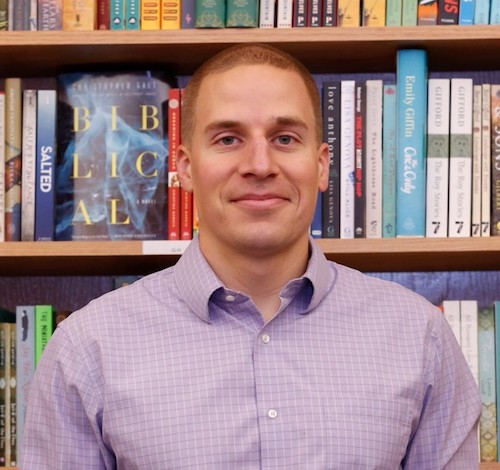
Greg Hickey is the author of the dystopian fiction novel Our Dried Voices, a finalist for Foreword Reviews’ INDIES Science Fiction Book of the Year Award. The book depicts a future colony where humans live without disease or hunger, where every want is satisfied automatically, and there is no need for labour, struggle or thought. Interested readers can start Our Dried Voices for free on Greg’s website.
Read his articles here.




